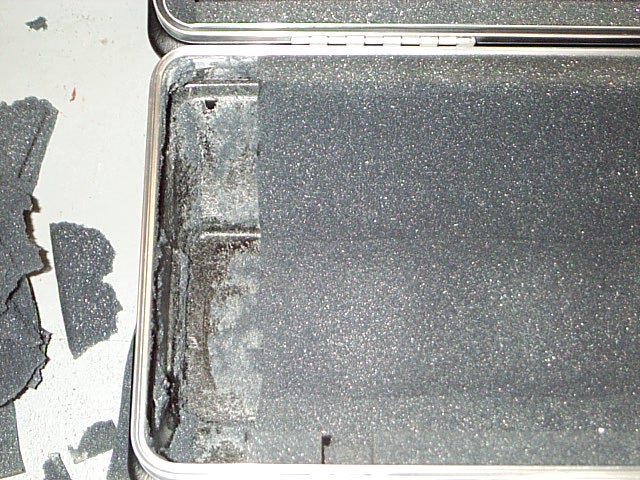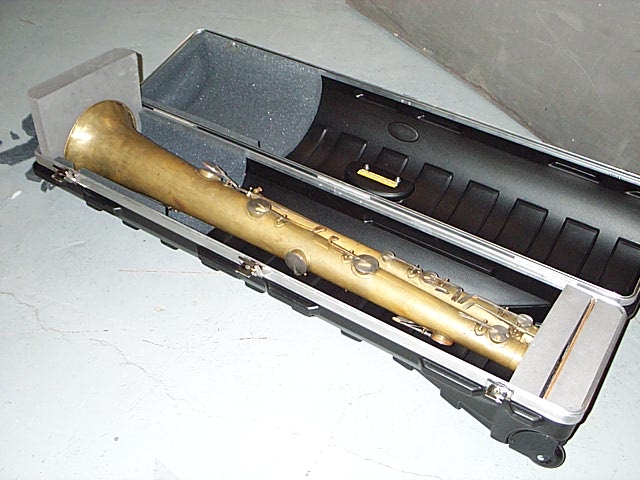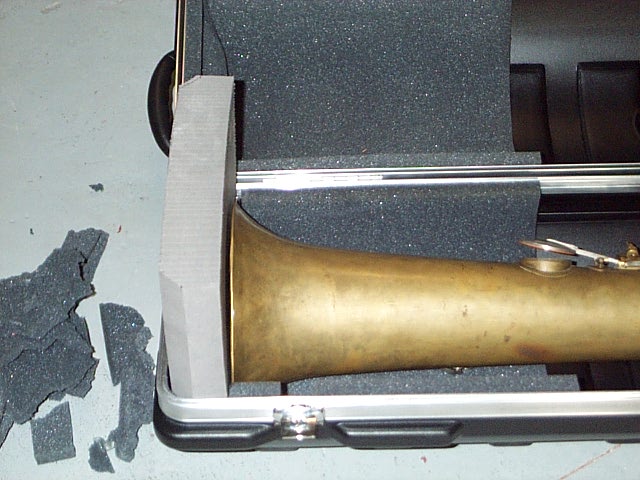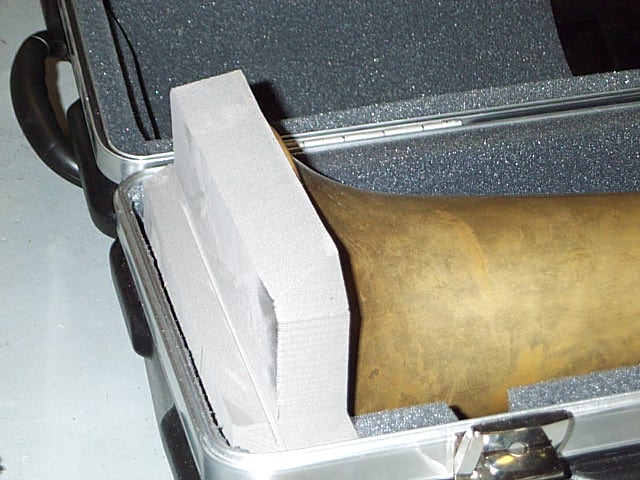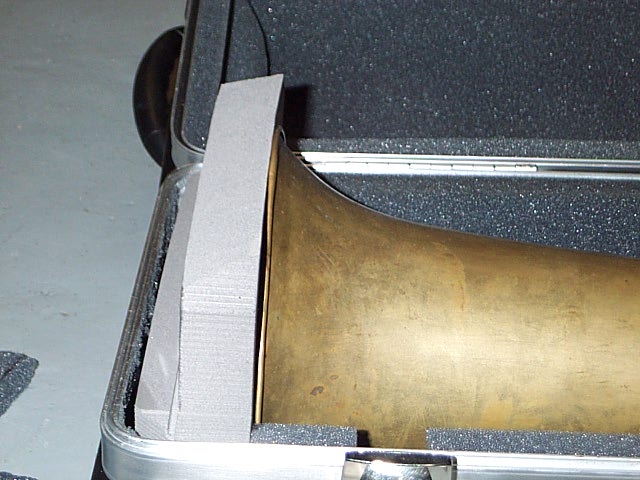The ophicleide case needs a firm pad that will both protect
the bell from longitudinal forces but will also keep the instrument pressed
lightly yet firmly in the direction of the bow (see previous chapter.)
Whatever room remains in the case shell after the bow end is padded
must be taken up with this bell pad. In the author's instance, the dimensions
worked out so that the 2" thick foam sections added up with the length
of the instrument to fit the case exactly. In other instances, it may be
necessary to add more layers of foam, even thinner layers of cut foam.
In either situation, it will be necessary to remove the SKB factory's
foam so that an adequate gluing job can be done to hold the bell pad in
place. This photo shows the excess foam rubber cut away.
